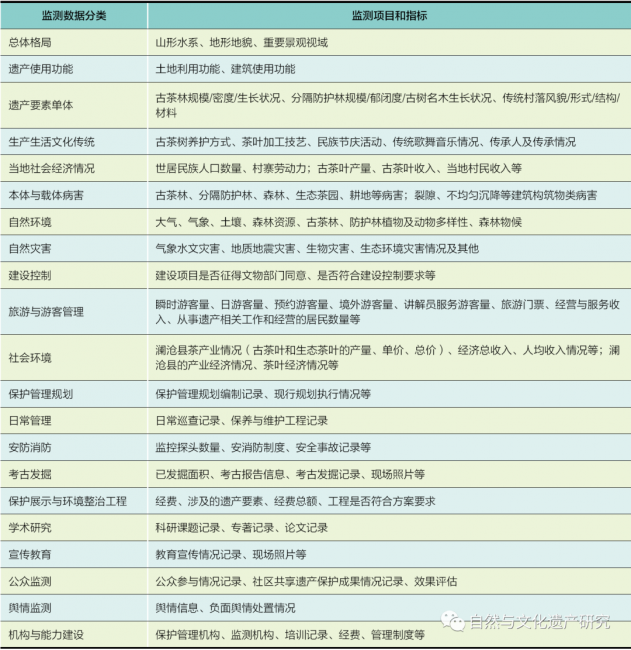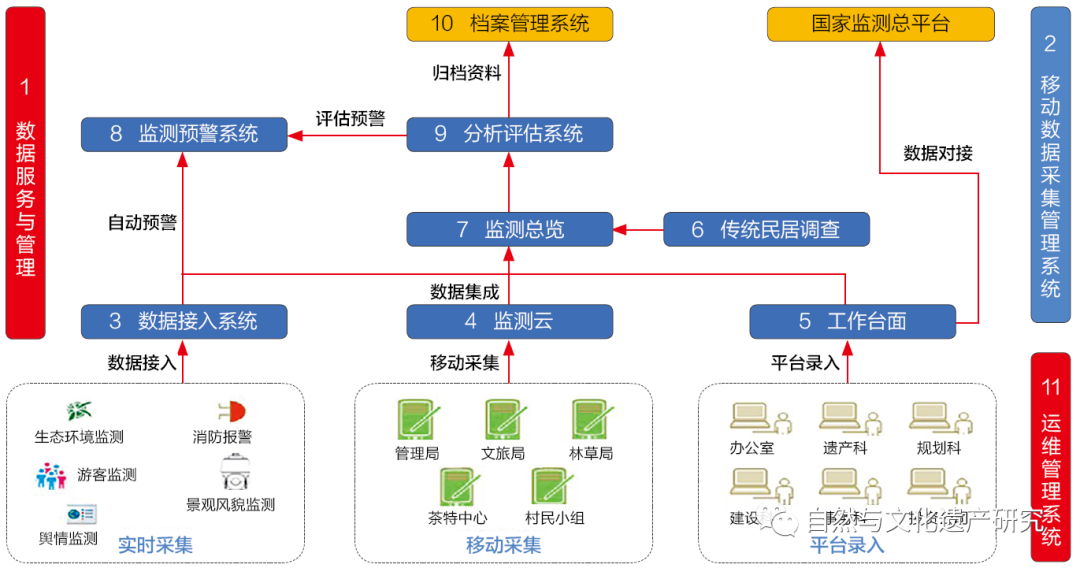| Exploration and lnnovation of Monitoring Methods for the Cultural Landscape of Old Tea Forests of the Jingmai Mountain in Pu'er Compatible with Agricultural Heritage |
| PublishDate:2023-09-05 Hits:519 |
Agricultural heritage is a type of living heritage highly compounded with nature, economy and society, and its monitoring is a very challenging task. The production, living, and ecological elements of the Old Tea Forests of Jingmai Mountain are integrated, making it a typical agricultural heritage. In order to meet the monitoring requirements of the Convention Concerning the Protection of the World Cultural and Natural Heritage and the Operational Guidelines for the Implementation of the World Heritage Convention, on the basis of analyzing the characteristics of cultural heritage, the monitoring processes entail systematic, agile and innovative methods, given that agricultural heritage is the synthesis of nature, society and economy, which demands a compatible approach to sustainable development. Specific practices for exploring and innovating in the monitoring are also provided, such as combining high-definition images, automated equipment and manual daily patrols. On the other hand, the effectiveness of monitoring and management of Old Tea Forests of Jingmai Mountain is summarized through endeavors like establishment of well-rounded monitoring and feedback system, conservation on agricultural heritage elements. This plays a positive role in maintaining the authenticity and integrity of the heritage and improving management capabilities and provides significantly exemplary experience for other similar agricultural heritages.
Fig 1. Monitoring Standards
Fig 2. Monitoring and Alerting System
Source: Edited from pkuwhitrap WeChat Account, originally published on Study on Natural and Cultural Heritage Original Authors: WEI Tianxing, CHEN Yaohua, LI Yang Edited by: JIANG Yunyang (Intern) |
|
|
- News | WHITRAP Shanghai and CNR-ISPC bilateral meeting
- News | WHITRAP meets Cité de l’Architecture et du Patrimoine
- WHITRAP Hosting "Workshop on Preliminary Assessment for National Focal Points of the Asia Region" in Chengdu
- WHITRAP Shanghai meets UNESCO
- INTERNATIONAL CONFERENCE PRELIMINARY ANNOUNCEMENT & CALL FOR PAPERS
- Observation of the 46th Session of the World Heritage Committee
Copyright © 2009-2012 World Heritage Institute of Training and Research-Asia and Pacific (shanghai)




